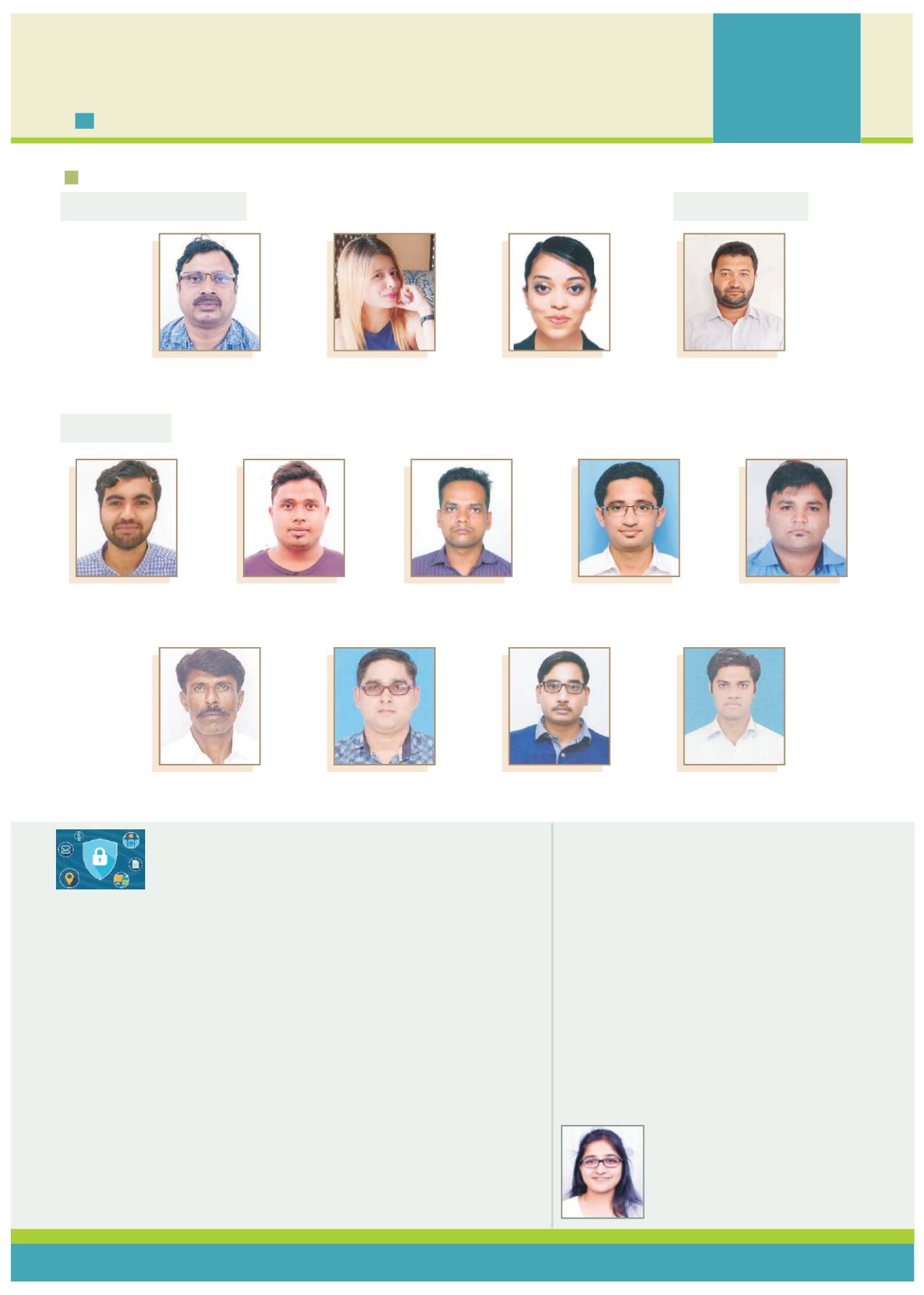

COMPANY
BUZZ
July-September 2018
15
NEW JOINEES
Mr. Abhishek Singh
MT - Mechanical
Mr. Akhilesh Yadav
Sr. Engineer - Project
Mr. Ayush Kumar
GET - Mechanical
Mr. Bhavsinh B. Jadav
Engineer - Instrumentation
Mr. Kaushik V. Joshi
Assistant Manager - Logistics
Mr. Malde K. Kadegiya
Security Supervisor
Mr. Tushar Jangeer
Engineer – MIPS
Mr. Ramkumar Pandey
Supervisor Electrical
Mr. Ravindra Kumar Tripathi
Assistant Manager
Mr. Rajiv Kumar SIngh
General Manager-
Technical Services
Mr. Mahendra Zala
Assistant Manager -
Mines
Ms. Tinaz Engineer
Executive Assistant
to Executive Vice Chairman
Ms. Immaculate Gonsalves
Secretary
to Executive Vice Chairman
Corporate Office, Mumbai
GSCL, Sidheegram
SCL, Ranavav
Understanding
Information Security
What is Information Security?
Information Security is the practice of preventing unauthorized access, use,
disclosure, disruption, modification, inspection, recording or destruction of
information. Information Security's primary focus is the balanced protection of
confidentiality, integrity and availability of data, while maintaining focus on
efficient policy implementation without hampering organization productivity.
How is it achieved?
It is largely achieved through a multi-step risk management process that
identifies assets, threat sources, vulnerabilities, potential impacts, and possible
controls, followed by assessment of effectiveness of risk management plan.
Few Important Tips:
1. Always think twice before clicking on links or opening attachments.
Sometimes all it takes is that extra split second to realize that you might be
being tricked.
2. Verify requests for private information (yours or anyone's), even if the request
seems to come from someone you know. Con artists know how to fake their
identity.
3. Protect your passwords. Make them strong, never reveal them to anyone, and
use multi-factor authentication (MFA, also called two-step authentication)
wherever possible.
4. Protect your stuff! Lock it up or take it with you before you leave, even if
you'll only be away for a second. And always password-protect all your devices.
5. Keep a clean machine! Keep your devices, apps, browsers and anti-virus/anti-
malware software patched and up-to-date. Automate software updates and
restart your devices periodically to ensure updates are fully installed.
6. Backup critical files. Store backups in a physically separate location from the
original and test them periodically.
7. Delete sensitive information when you are done with it. Better yet, don't
store it in the first place if you don't need to.
8.Ifit's suspicious, report it!
Overview
The global IT audience has seen far too many data breaches occur. A business
and its customers could suffer widespread irreparable financial loss as well as
damage to the company's reputation. Some security professionals know this
too well, the knowledge by itself is only half the battle won.
Contributed by
by
Priyanka Hanwate
,
M.Tech.-Information Security,
wife of Mr Sachin Hanwate,
Executive Assistant to Mr. M N Mehta


















